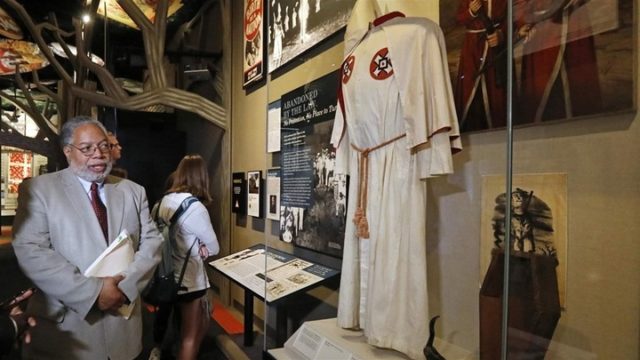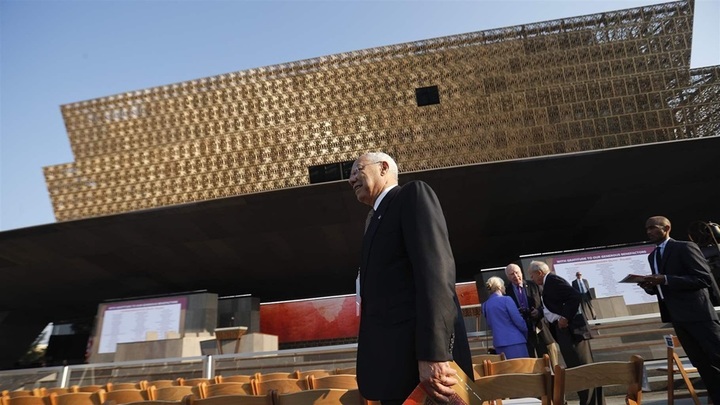
By Martha T. Moore
Black Voices
Black history museums and historic sites are flourishing across the South, riding a wave of interest in African-American history that has made a stunning success of the two-year-old National Museum of African American History and Culture in the nation’s capital.
In the past year, museums documenting the civil rights struggle and memorializing lynching victims have opened in Jackson, Mississippi, and Montgomery, Alabama. In Nashville, a museum focusing on African-American music is scheduled to open next year.
And in Charleston, South Carolina, construction is set to begin next year on a projected $75 million black history museum that will stand on the former site of Gadsden’s Wharf, the disembarkation point for more than 100,000 Africans brought to America and sold into slavery.
At a time when attendance at some large museums is flagging — 12 of the 20 biggest U.S. museums saw flat or lower attendance in 2017 compared with 2016 — the swirl of activity involving black history stands out.
In Church Creek on Maryland’s Eastern Shore, for example, a year-old, 17-acre state-national park memorializing the place where Harriet Tubman was born and enslaved was expected to draw 75,000 visitors in its first year; it attracted 100,000.
Meanwhile, curators have rewritten exhibits at sites such as Mount Vernon and Monticello, the homes of Presidents George Washington and Thomas Jefferson. They’ve also added information and buildings to teach visitors about the lives of enslaved people who worked on the plantations.
“Relevant history is inclusive history. Everyone is racing to do that,’’ said John Dichtl, president and CEO of the American Association for State and Local History, based in Nashville. Museums and other institutions “are all working on emphasizing the history of civil rights and the history of race relations and the history of slavery. It’s a priority for everyone.’’
History professionals cite several factors for the increased interest, including the availability of more federal money, Barack Obama’s presidency, and the 50th anniversaries of many civil rights milestones.
The Black Lives Matter movement, controversies over Confederate monuments, protests by NFL players and last year’s violence in Charlottesville, Virginia, also have prompted more Americans to want to “grapple with these issues of identity, with race, with nationalism and what that means,” according to Brian Carter, president of the Association of African American Museums, based in Washington, D.C.
“The country is changing. It’s looking at itself in different ways than it has historically,” Carter said. “Museums help people make meaning of their own experiences.”
New federal money also has helped. In 2016, the National Park Service began giving grants to African-American historical sites for personnel, programming and research, though not for construction. This year, the park service awarded $12.6 million in grants to 51 projects in 24 states, up from $7.8 million in grants to 39 projects in 2017.
And last summer, the National Trust for Historic Preservation announced a $25 million grant campaign to support important African-American sites — including the home of jazz great John Coltrane in Dix Hills, New York.

Raising the Bar
The new museums and historic sites would be happy to achieve a fraction of the success of the National Museum of African American History and Culture. That museum, which occupies a prime location on the National Mall, drew 2.4 million visitors in 2017, making it one of the 10 most-visited museums in the United States.
The museum, which is part of the Smithsonian Institution, “raised the bar of awareness around African-American history and museums. It just stimulated wanting to know more,’’ said Michael Boulware Moore, president of Charleston’s International African American Museum. “This history has largely been muted forever and now this history has been coming out. Now African-Americans, and Americans broadly, are just curious about this.’’
When the national museum opened, “we thought that might have the impact of sucking all the air out of the room. Just the opposite,’’ Moore said. Instead, it has been a catalyst for more presentations of black history, rather than the final word on the subject.
“I don’t think there’s going to be an oversaturation of African-American history in this country for quite some time,’’ Moore said. “There are art museums everywhere, and there are history museums everywhere. I see it as really healthy that there will be African-American museums everywhere.’’
The museum on the Mall also has provided concrete help to other African-American museums. It supports paid internships at museums, including some specifically for students at historically black colleges and universities, and subsidizes professional development conferences for museum personnel. And it provides travel grants for museum professionals to attend the annual conference of the Association of African American Museums.
Civil Rights Tourism
States also are investing in campaigns to promote civil rights tourism. Prompted in part by the 50th anniversaries of seminal events of the 1960s, 14 Southern state tourism agencies in January unveiled a joint website detailing stops on what they are calling the U.S. Civil Rights Trail.
It lists about 130 destinations, from the Woolworth’s lunch counter in Greensboro, North Carolina, that was the site of the first sit-in by black students, to a statue of civil rights activist Fannie Lou Hamer in her birthplace of Ruleville, Mississippi.

Obama declared national monuments at civil rights historic sites in Birmingham and Anniston, Alabama, just before leaving office. Now buildings at those sites — the A.G. Gaston Motel in Birmingham and the Greyhound bus station in Anniston, where Freedom Riders were attacked in 1961 — are being restored with local and federal funds.
President Donald Trump last month designated his first national monument at Camp Nelson, near Lexington, Kentucky, where blacks fled during the Civil War to join the Union Army and where they and their families lived in refugee settlements and sought emancipation. His administration also has been expanding the African American Civil Rights Network of historic sites and started the process to designate the Medgar Evers home in Jackson, Mississippi, as a national monument.
Civil rights landmarks have been “overwhelmed by the response and interest,’’ said Lee Sentell, tourism director for Alabama, which has had its own civil rights trail.
“The idea of grouping them under one umbrella has been very well-received because it helps tell the general public that these landmarks are not one-offs,” Sentell said. Instead, the sites “collectively outline the progression that led to landmark Supreme Court decisions and congressional legislation that dismantled legal white supremacy.”
The South Carolina African American Heritage Commission last year created a “Green Book” mobile app that includes 300 historic African-American sites in the state. The app is named for the Jim Crow-era guides for black travelers that detailed safe places to get food and lodging. North Carolina is planning its own Green Book app that will include sites that were in the original guidebook.
“Cultural tourism, or heritage tourism, is one of the fastest growing markets in the country,’’ said Jannie Harriot, vice chairperson of the South Carolina commission.
“[But] nothing that we do is limited to black people. Sometimes I think white people are more interested in our history than we are. They show up to conferences, they want the information, and sometimes I know it’s for economic reasons — because they know where the trend is now.’’




